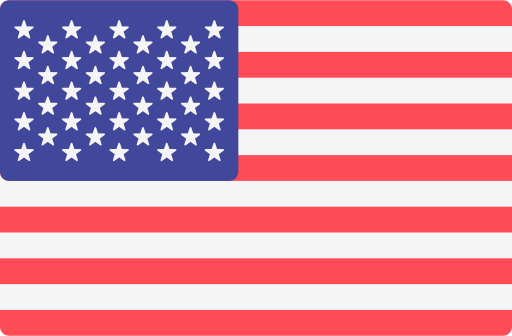The Difference Between Face Cloth Masks and Silk Cloth Masks
The Difference Between Face Cloth Masks and Silk Cloth Masks
According to research, fitted face masks made from a mixture of fabrics comprising of multi-thread cotton, chiffon work, and natural silk material can effectively strain out specks. In the advent of the Coronavirus pandemic, the United States Centers for Disease Control and Prevention advocates that people put on masks in public; and because the N95 and surgical masks are in short supply and are reserved for health care officials who are frontline workers, many people are making their face masks out of fabric. Supratik Guha, a professor with the Pritzker School of Molecular Engineering at the University of Chicago said that due to the massive need for cloth face masks getting it to have very good filtering is viable, he, however, pointed out that the face masks must fit very close to the face for maximal efficacy.

Studies on the penetrative quality of fabric/materials
The Coronavirus is transmitted mainly through respiratory droplets that are released when an infected individual speaks, sneezes, breathes or coughs; Guha and his team decided to research to find out the effectiveness of single-layered fabric face masks and multi-layered fabric facemasks in filtering particles. The results showed that a single-layered cotton sheet face mask of a compact weave, lined with two layers of chiffon fabric with a mix of polyester filtered out the most 80-90 percent of aerosol specks.
Consequently, replacing the chiffon with pure silk or a polyester-cotton fabric, or making use of a cotton quilt with cotton-polyester, also gave results close to the first one. The discoveries made are a useful lead. It was pointed out by the research team that firmly woven fabrics can be used automatic blockade to specks and stable charge fabrics like pure silk and certain types of chiffon are good to serve as conductive barriers. The purpose of the conductive effects of these fabrics is to draw in and hold the miniature specks which on the contrary could pass through the holes in cotton fabric; similar to the mechanism employed in the making of the N95. Guha emphasized on the importance of the fitting of a mask; that small space in the fitting of the facemask limits the filtering capability by half or more. Fabrics that did not come out with good results were the spandex and the regular polyester; more so because of their wider weave form. In essence fabric with tighter weave form is much better inefficacy.

Researchers from the University of Cincinnati also decided to study to determine what fabrics were the most effective to use for facemasks. The group investigated the penetrative quality of some fabrics like polyester, silk, and cotton as measured by their intransigence to the filtration of small and aerosolized water droplets. The Coronavirus having caused more than ten million infections and more than five hundred thousand deaths below seven months; coupled with the absence of antiviral medications for either curative or preventive use has translated to the global adoption of compulsory lockdowns, cautious and meticulous hand sanitization, sheltering at home as well as social distancing measures and the use of face masks. The central functionality of a face mask is to avert the transmission of infection from the user to others, but a level of protection also happens vice-versa.
The present research details on the usefulness of silk as the top material for face masks which conform to an advisory on public health.
The researchers studied five various fabrics: processed 100% mulberry silk from pillowcases in washed and unwashed condition to evaluate the effect of washing on it, synthetic polyester, pure silk, processed cotton, and paper towel as a constructive control. The team of researchers studied the hydrophobicity of these materials, that is, the range resistance to penetration of specks and water droplets as this is the major means of transmission of the Coronavirus.
Secondly, they studied how easy it was to breathe with each type of material which establishes the comfort of the mask when used for long. Thirdly, they evaluated the reaction of the material to water even after frequent washing.
The materials were studied in two ways: when used as a cover of another barrier, or when used as a home-made face mask. They were each studied to check for which material had a higher water and humidity resistance, the breathability of each material type. They also studied the efficacy of single and collective layers of silk for saturation.
Advantages of Silk
Preliminary research revealed that silk could be used as an anti-infection barrier mask, with finer filtration when numerous layers are used.
The researchers observed that the fabrics had obvious variations found in contact angles. It was discovered that silk had contact angles above 90 degrees, but the other three materials’ contact angles were below 90 degrees, meaning they were soaking in droplets almost immediately.
The silk moth produces silk to spin its cocoon; hence making silk a pure fiber from nature. The protein found in the silk material not only repels water but also antibacterial, antimicrobial, and antiviral due to the availability of copper, integrated by animals into their silk production.
This is what is used in medical stitching. Interestingly, it is also used as organic substances for many healthcare requisitions being examined.
Paper towels and cotton had a high range of saturation in comparison to silk; so with multiple layers of silk, the penetration of droplets was insignificant. This is very crucial as it is most common to use face masks with single or double-layers.
The efficacy of silk for use as a face mask
The researchers observed that when silk is used for face masks, its efficacy is not in doubt as it averts the penetration of specks or droplets and its saturation range is the least in comparison to the other fabrics examined. In summary, the face masks made of 100% coupled silk will repel water just and can be reused after being sterilized.
These aforementioned features of silk, along with its breathability, and coupled with the fact that it does not soak in water, makes it the perfect material for face masks. Its other merits comprise of its deep-rooted antimicrobial resources, also the lightness of the material though used in numerous layers. Silk is soothing to the skin; it has no irritant effect which makes it satisfactory for wearing for an extended period.
In conclusion, silk is the best fabric/material for the making of face masks; putting into consideration all its inherent features and the qualities of the fabric itself.









Leave a comment